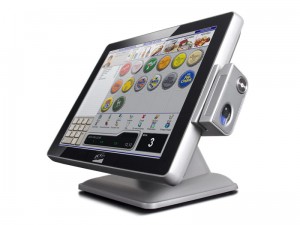The perennial advancements of technology, never cease to captivate and astonish the diehard enthusiasts of innovation and advancement. At this year’s 2015 Consumer Electronics Show (CES) held in Las Vegas every year, besides the usual parade of electronic gadgetry, storied introductions of product previews, and climactic announcements of nascent technology for improving the quality of life in general, the food service industry took center stage with numerous technological developments in the way food is processed. The organizers of CES call them Smart Kitchen Innovations. The list that follows provides highlights of some of the most important features of these kitchen devices.

POS Improvements
Nothing prompts rapid innovation like the failure of an existing technology. And due to the high profile data breaches that took place in 2014 in many high profile restaurants such as, PF Chang’s, Jimmy John’s, and the like, POS technology undertook several vital upgrades to increase security. One of these improvements is the adoption of the Europay, MasterCard and Visa (EMV) standard. This feature garners its security from a microprocessor chip that is implanted on the face of the card itself with the functionality of encrypting user data by generating a temporary user code for each transaction as an additional layer of security. This year the trend is well underway, as most US banks and credit card institutions are issuing all their cards embedded with the EMB chip.

Tech-enabled Revenue Management
Revenue management, also known as yield management by industry experts and restaurant consultants, seeks to maximize revenue and contribution through the application of robust analytics that predict consumer behavior with respect to pricing so that menu prices are always optimally set. This menu design is achieved through the use of electronic menu boards and the implementation of highly sophisticated POS data systems that vary prices in direct relation with traffic. That is to say, when patronage is low, the system automatically lowers menu prices to drive up demand; when traffic is high, prices are raised accordingly.

Energy Optimization
But developments in technology are not data-centric when it comes to restaurant design; they also encompass technology to increase the efficiency of cooking and refrigeration, both in terms of time saved, labor, and energy used. The equipment that follows is a short sampling of this year’s predicted winners of the Kitchen Innovations Awards for 2015.
OVENTION: M360 Oven
This oven uses an innovative technology called Precision Impingement that essentially provides restaurateurs rapid-cook technology without using a microwave oven. This groundbreaking oven, with enormous capacity, enables the preparation of 1000 menu items with varying cook times and heat settings and profiles that are fully programmable.
RATIONAL USA: SelfCookingCenter 5 Senses
This piece of equipment is the first of its kind in the food service industry. The SelfCookingCenter 5 Senses enables completely automated cooking by communicating directly with the operator from start to finish using programmable technology to measure food size, load quantity, food condition, and automatic temperature determination. It can also adjust box climate, cook time, air speed, by emulating operator preferences.
SCHAERER LTD.: Schaerer Coffee Art C HC
Using a 7-inch touchscreen interface to enable fully programmable configurations, Shearer’s Coffee Art system enables the production of iced coffee drinks in a fast and reliable manner that prevents dilution or ice melt, with a technology that brews ground coffee with the same strength of a conventional drip filter coffee machine and with the same taste, aroma, and freshness enabled by fully customizable profiles.





